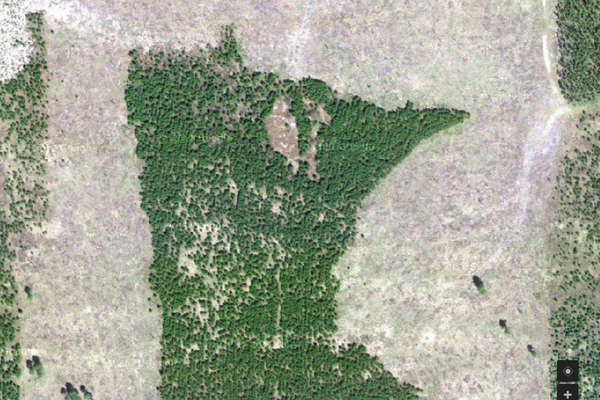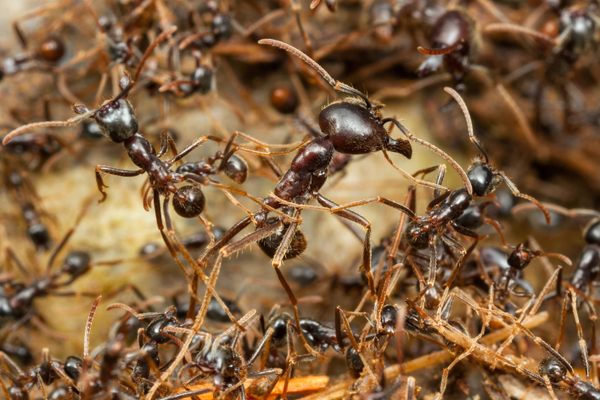Ants Are Swarming Kenya’s Trees and Changing Everything for Lions
Even the smallest insect can impact the largest animals.
The whistling thorn acacia tree is a formidable sight in the Kenyan savanna, covered in both long spiky thorns and the native acacia ants that live on the branches. The plants are also an integral part of the ecosystem in the savanna, providing coverage for lions to stalk their prey. But that ecosystem is now in flux, thanks to a different creepy-crawly species: the invasive big-headed ant.
Typically, native acacia ants guard the whistling thorns from elephants, swarming up their nostrils if they try to eat the tree. But those native insects and their young are being eaten by big-headed ants, which “likely were imported from the Indian Ocean in produce bushels,” says Jacob R. Goheen, a wildlife ecologist in the University of Wyoming’s Department of Zoology and Physiology and primary author of the study. That means the trees have become vulnerable to elephants, which have indeed been destroying the infested trees seven times quicker than those protected by the native ants. That’s a problem for the lions, who use the trees as cover to hunt zebras.

According to a recent study published in Science, lions have had to alter their prey choices: Zebra kills have gone down, while African buffalo kills have drastically increased. The study, conducted over three years in the Ol Pejeta Conservancy in Laikipia County in Kenya, tracked a few factors: landscape visibility, zebra population, big-headed ant population, and zebras killed by lions.
“I was most surprised by how readily lions switched from killing zebra—their primary prey—to more formidable buffalo,” Goheen says.
Buffalo are a much more dangerous prey option for lions; it takes a lot of energy, and the buffalo may end up killing the lion first. This isn’t necessarily bad for the Ol Pejeta lions, though. Craig Packer, the director of University of Minnesota’s Lion Research Center, notes that Goheen’s study doesn’t mention a decrease in the lion population.

“The lions weren’t particularly harmed, they just had to switch their prey preference,” Packer, who wasn’t involved in the study, says. “But there was no evidence the population went down.”
According to Packer, this study is just a single step in what should be a larger—and longer—look at the ecosystem across Kenya and other parts of Africa.
“In ecology, a lot of these things play out over decades,” he says. “Wait until they have 30 or 50 years of data, and it’ll be much clearer what’s going on.”

Interestingly, Packer notes, the whistling thorn is actually considered a pest species in a number of places in east Africa. It’s contributing to bush encroachment, where grasslands are replaced with woody vegetation, which leads to a decrease in the population of grazing animals.
“In the larger view, the ant [in Ol Pejeta] may in some ways help reverse the brush encroachment, which would be good for a lot of the lion’s prey species,” Packer says.
It’s possible, also, that some other type of vegetative cover could grow that’s better at dealing with elephants than the whistling thorn, which would provide a new space for the lions to stalk their prey. While these proposed possibilities remain to be seen based on more time and research, the invasive ants have certainly impacted the landscape and wildlife in Kenya—and more research will show how all the living creatures in the ecosystem deal with those changes.
























Follow us on Twitter to get the latest on the world's hidden wonders.
Like us on Facebook to get the latest on the world's hidden wonders.
Follow us on Twitter Like us on Facebook